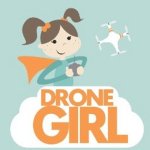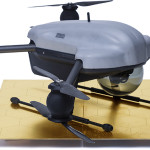By Donovan Wixom
Drones, from remotely controlled quadcopters to autonomous airplanes, are becoming more and more common place as their technology becomes more advanced. They are spreading into every branch of business from cinematography to agriculture. They are used in hobbies not only for recreational flight, but for photography and even the construction of the drone itself. They are even reaching the academic field, finding themselves in research areas like geography and meteorology. In all of these areas, they can are often used for a lot of good and with great results despite some obvious shortcomings. It’s hard to say what the best use of drones is, but here are this writer’s top three best emerging uses for drones.
- Package Delivery
Package delivery and consumer purchase of goods has changed a lot in the last few years. With the advent of internet shopping, consumers began having a choice of where and how they got their goods. Then, internet shopping had some advantages, but in many cases it was easier to purchase simple thing from local stores. Soon, however, services such as Amazon Prime became available. These services provided cheap and fast deliver of many items to many people. For many people, it was easier to sit at home and quickly search what you wanted on a web page and then wait. Amazon even has quick dash buttons, or quick purchase buttons, for everyday items that you can keep in your home next to where you store them, and then push it when you want more shipped to you. While two day delivery is quick, the Amazon website says that it is trying to have packages delivered within 30 minutes using drones. Drone delivery can provide even quicker and cheaper delivery of many great products right to our door steps, providing consumers an even easier way to get the products they want.
Drones do have some detriment to them. Currently, battery life isn’t great. A drone can only fly for so long before it has to recharge, meaning a business might have to have a lot of drones to get their products shipped, or they will have to wait for batteries to charge and slow shipping. They also have a limited weight capacity, so big orders can’t be shipped with drones and will have to done the old fashion way with trucks and airplanes. Ten there are the problems associated with any air craft. Adverse weather conditions and avoiding hazards like commercial aircraft pose a big problem to current drone tech.
That being said, I think the drone delivery has a lot of potential. A cheap and fast way to get last minute shopping done, provide business and innovators with needed equipment quickly, provide health care facilities with lifesaving drugs fast, and even getting my videogames that much quicker sounds like a service that could really change the way consumers interact with business for the better, boosting the economy and helping businesses keep customers happy.
- Wildlife Management and Protection
It’s not easy to keep track of and protect wildlife. Sometimes scientist can mark an animal with a tag or GPS, but a lot of what these agencies do requires walking around and being in the field, and field work takes a lot of time. A more specific example of this can be seen in scientists captive breeding endanger animals and then releasing them into the wild. Jennifer Forbey, a biologist at Boise State University, explains that the process for releasing animals usually requires a lot of walking around, but drones and their special sensors can quickly scan an era to see the best place to release animals [1]. AggieAir, a group using drones in research at Utah State University, says they are using their drone for “…tracking of invasive wetlands plant species, and monitoring of in-stream fish habitat…” Sergewich, a writer at conservationdrones.org, says that another way drones are used to help our environment is doing tree density maps. These maps are essential to know how wildlife, such as chimpanzees, live in their environment. And they very hard to do by foot. They are also expensive and inconvenient to do with manned aircraft. But with a drone, it is cheap and easy to get good coverage and footage of the area.
There are, of course, some disadvantages to this. Aside from the usually battery life problems, drones could scare or even hurt the wildlife they are trying to protect. If they crashed they could seriously hurt some animals or plants, which is what they were trying to prevent. Jennifer Forbey also comments that it can takes a long time to get the right permissions and plans to fly the drone. It could take upwards of a year to plan a flight [1]. But all this aside, drones have already done a lot of good in the environment and will continue to get better at doing so as technology advances.
- Agriculture
Aerial vehicles have been used in agriculture for a long time. Planes and helicopters spray pesticides and record data and pictures of fields. This allows farmers to cover a lot of field with pesticides or fertilizer quickly, and make sure that their fields have enough water and are healthy in general. But what if farmers could collect that data quicker, and then immediate apply necessary pesticides or fertilizer to specific plants instead of whole fields? This is called precision farming, and it is already being done thanks to drone. Matthew Grassi, a writer at Dronelife, explains that autonomous drones can fly over a field and examine crop health, irrigation equipment, weed location, fertilization rate, and even monitor cattle herding. Then that drones immediately act on the information and provide specific area with needed resources.
For this to be truly helpful and efficient, drones will need to become batter at working in swarms and networks so that many drones can collect data and apply agents quickly. Drones also have the issue of, you guessed it, battery life. Drones can’t fly all day, so farmers can only cover so much ground in a given day. But being able to quickly and cost effectively produce a lot of food is good for the whole world. It is worth the wait to get the right technology to help feed many people.
[1] McGlynn, Daniel. “Flights Help Biologist Study Wildlife Habitat.” CQ Researcher 18 Oct. 2013: 896. Print.


